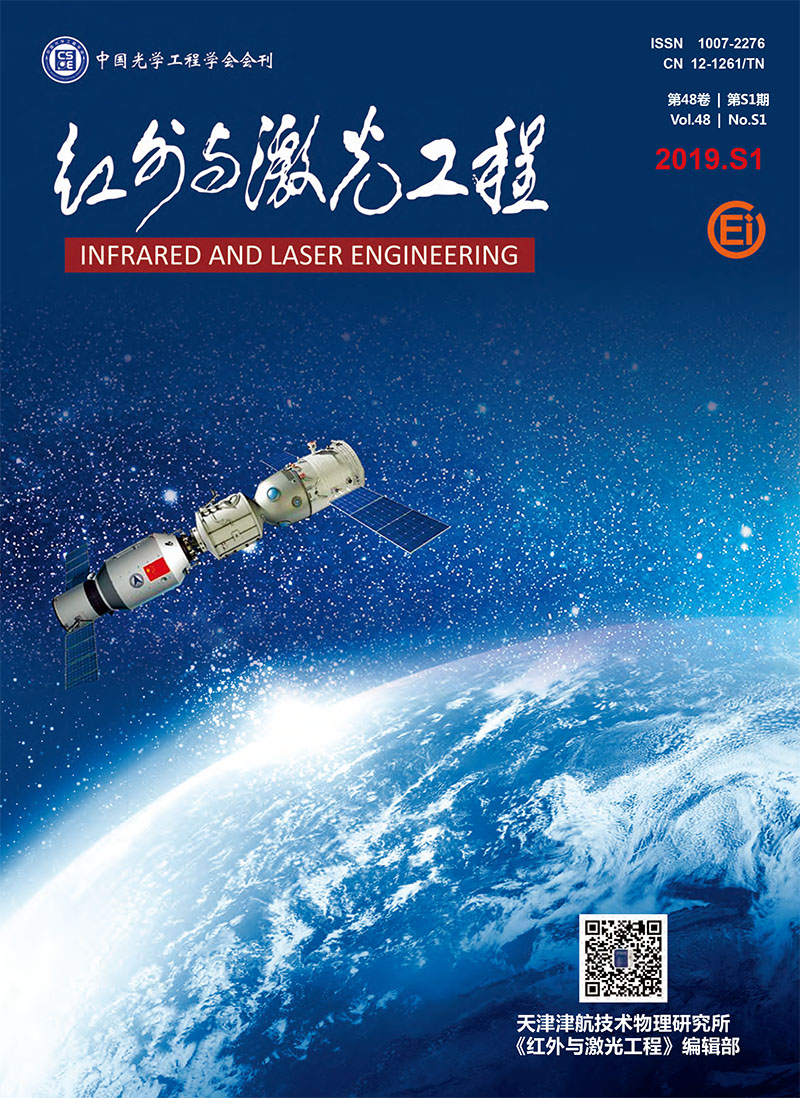|
[1]
|
Tang Xinming, Li Guoyuan. Development and prospect of laser altimetry satellite[J]. Space International, 2017(11):13-18. (in Chinese)唐新明,李国元. 激光测高卫星的发展与展望[J]. 国际太空, 2017(11):13-18. |
|
[2]
|
Li Guoyuan, Tang Xinming. Analysis and validation of ZY-3-02 satellite laser altimetry data[J]. Acta Geodaetica et Cartographica Sinica, 2017, 46(12):1939-1949. (in Chinese)李国元, 唐新明. 资源三号02星激光测高精度分析与验证[J]. 测绘学报, 2017, 46(12):1939-1949. |
|
[3]
|
Tang Xinming, Li Guoyuan, Gao Xiaoming, et al. The rigorous geometric model of satellite laser altimeter and preliminarily accuracy validation[J]. Acta Geodaetica et Cartographica Sinica, 2016, 45(10):1182-1191. (in Chinese)唐新明, 李国元, 高小明, 等. 卫星激光测高严密几何模型构建及精度初步验证[J]. 测绘学报, 2016, 45(10):1182-1191. |
|
[4]
|
Waleed Abdalati, Zwally H J, Robert Bindschadler, et al. The ICESat-2 laser altimetry mission[J]. Proceedings of the IEEE, 2010, 98(5):735-751. |
|
[5]
|
Yang Fan, Wen Jiahong, Weili Wang, et al. Application progress and prospect of ICESat and icesat-2[J]. Chinese Journal of Polar Research, 2011, 23(2):138-148. (in Chinese)杨帆, 温家洪, Weili Wang, 等. ICESat与ICESat-2应用进展与展望[J]. 极地研究, 2011, 23(2):138-148. |
|
[6]
|
Xie Dongping, Li Guoyuan, Tang Xinming, et al. GEDI space-based laser altimetry system and its application in the United States[J]. Space International, 2018(12):39-42. (in Chinese)谢栋平, 李国元, 唐新明, 等. 美国GEDI天基激光测高系统及其应用[J]. 国际太空, 2018(12):39-42. |
|
[7]
|
Anthony W Y, Michael A K, David J H, et al. Development effort of the airborne lidar simulator for the lidar surface topo-graphy (LIST) mission[C]//Lidar Technologies, Techniques, and Measurements for Atmospheric Remote Sensing VⅡ. Interna-tional Society for Optics and Photonics, 2011, 8182(3):818207. |
|
[8]
|
Li Guoyuan, Huang Jiapeng, Tang Xinming, et al. Influence of range gate width on detection probability and ranging accuracy of single photon laser altimetry satellite[J]. Acta Geodaetica et Cartographica Sinica, 2018, 47(11):1487-1494. (in Chinese)李国元, 黄佳鹏, 唐新明, 等. 距离门宽度对单光子激光测高卫星探测概率及测距精度的影响[J]. 测绘学报, 2018, 47(11):1487-1494. |
|
[9]
|
Winker D M, Vaughan M A. Vertical distribution of clouds over Hampton, Virginia observed by lidar under the ECLIPS and FIRE ETO programs[J]. Atmospheric Research, 1994, 34(1-4):117-133. |
|
[10]
|
James D K. Stable analytical inversion solution for processing lidar returns[J]. Applied Optics, 1981, 20(2):211-220. |
|
[11]
|
Zhien Wang,Kenneth Sassen. Cloud type and macrophysical property retrieval using multiple remote sensors[J]. Journal of Applied Meteorology, 2001, 40(10):1665-1683. |
|
[12]
|
Han D W, Liu W Q, Zhang Y J, et al. Memorable glide window integral algorithm for retrieving cloud height[J]. High Power Laser Particle Beams, 2008, 20(1):1-5. |
|
[13]
|
Pal S R, Steinbrecht W, Carswell A I. Automated method for lidar determination of cloud-base height and vertical extent[J]. Applied Optics, 1992, 31(10):1488-1494. |
|
[14]
|
Mao Feiyue, Gong Wei, Li Jun, et al. Cloud detection and parameter retrieval based on improved differential zero-crossing method for mie lidar[J]. Acta Optica Sinica, 2010, 30(11):3097-3102. (in Chinese)毛飞跃, 龚威, 李俊, 等. 基于改进微分零交叉法的米氏散射激光雷达云检测与参数反演[J]. 光学学报, 2010, 30(11):3097-3102. |
|
[15]
|
David P D, James D S, Edwin W E. Atmospheric multiple scattering effects on GLAS altimetry-part I:Calculations of single pulse bias[J]. IEEE Transactions on Geoscience Remote Sensing, 1999, 39(1):92-101. |
|
[16]
|
Mahesh A, Spinhirne J D, Duda D P, et al. Atmospheric multiple scattering effects on GLAS altimetry-part Ⅱ:Analysis of expected errors in Antarctic altitude measurements[J]. IEEE Transactions on Geoscience Remote Sensing, 2002, 40(11):2353-2362. |
|
[17]
|
Liu Jinhuan. Optical transform of Gaussian beam[J]. Optics and Precision Engineering, 1994, 2(3):15-21. (in Chinese)刘金环. 高斯光束的光学变换[J]. 光学精密工程, 1994, 2(3):15-21. |
|
[18]
|
He Junfeng, Liu Wenqing, Zhang Yujun, et al. New method of lidar ceilometer backscatter signal processing based on Hilbert-Huang transform[J]. Infrared and Laser Engineering, 2012, 41(2):397-403. (in Chinese)何俊峰, 刘文清, 张玉钧, 等. HHT在激光云高仪后向散射信号处理中的应用[J]. 红外与激光工程, 2012, 41(2):397-403. |
|
[19]
|
Zhang Gaixia, Zhang Yinchao, Hu Shunxing. Slant measurements of atmospheric boundary layer aerosol with mobile lidar[J]. Acta Optica Sinica, 2004, 24(8):1015-1019. (in Chinese)张改霞, 张寅超, 胡顺星. 车载测污激光雷达对大气边界层气溶胶的斜程探测[J]. 光学学报, 2004, 24(8):1015-1019. |
|
[20]
|
Yang Yanjie. Analysis of atmospheric impact of 1.064m laser on air transmission[J]. Science Technology Information, 2018(3):56-57. (in Chinese)杨彦杰. 1.064m激光在对空传输中的大气影响分析[J]. 科技资讯, 2018(3):56-57. |
|
[21]
|
Bugaichuk S A, Khizhnyak A I. Steady state and dynamic gratings in photorefractive four-wave mixing[J]. Journal of the Optical Society of America B, 1998, 15(7):2107-2113. |
|
[22]
|
Fernald F G. Analysis of atmospheric lidar observations:some comments[J]. Applied Optics, 1984, 23(5):000652. |
|
[23]
|
Yuan Song, Xin Yu, Zhou Jun. Lidar observations of the lower atmosphere in Hefei[J]. Chinese Journal of Atmospheric Sciences, 2005, 29(3):387-395. (in Chinese)袁松, 辛雨, 周军. 合肥市郊低层大气的激光雷达探测研究[J]. 大气科学, 2005, 29(3):387-395. |
|
[24]
|
Kovalev V A, William E E. Elastic Lidar Theory Practice Analysis Methods[M]. US:Wiley-Interscience, 2004. |
|
[25]
|
Xiong Xinglong, Li Meng, Jiang Lihui, et al. The study of the lidar ratio retrieval method with multiple scattering cirrus cloud[J]. Journal of OptoelectronicsLaser, 2014, 25(6):1158-1164. (in Chinese)熊兴隆, 李猛, 蒋立辉, 等. 多次散射的卷云激光雷达比反演方法研究[J]. 光电子激光, 2014, 25(6):1158-1164. |
|
[26]
|
Ansmann A, Wandinger U. Independent measurement of extinction and backscatter profiles in cirrus clouds by using a combined Raman elastic-backscatter lidar[J]. Applied Optics, 1992, 31(33):007113. |
|
[27]
|
Wang Xiangchuan, Rao Ruizhong. Lidar ratios for atmospheric aerosol and cloud particles[J]. Chinese Journal of Lasers, 2005, 32(10):1321-1324. (in Chinese)王向川, 饶瑞中. 大气气溶胶和云雾粒子的激光雷达比[J]. 中国激光, 2005, 32(10):1321-1324. |
|
[28]
|
Ephraim Zehavi. 8-PSK trellis codes for a Rayleigh channel[J]. IEEE Trans Commun, 1992, 40(5):873-884. |
|
[29]
|
Liu Zhao. Research on boundary layer height detection based on CALIPSO spaceborne lidar[D]. Beijing:University of Chinese Academy of Sciences (Institute of Remote Sensing and Digital Earth, Chinese Academy of Sciences), 2017. (in Chinese)刘诏. 基于CALIPSO星载激光雷达的边界层高度探测研究[D]. 北京:中国科学院大学(中国科学院遥感与数字地球研究所), 2017. |
|
[30]
|
Smirnov A, Holben B N, Eck T F, et al. Cloud-screening and quality control algorithms for the AERONET database[J]. Remote Sensing of Environment, 2000, 73(3):337-349. |
|
[31]
|
Li Jiaheng, Liu Houfeng, Zhao Danting. MODIS based aerosol optical thickness inversion algorithm and its application progress[J]. Green Technology, 2012(2):108-111. (in Chinese)李加恒, 刘厚凤, 赵丹婷. 基于MODIS的气溶胶光学厚度反演算法及应用进展[J]. 绿色科技, 2012(2):108-111. |
|
[32]
|
Cheng Chen. Monte Carlo simulations of radiative transfer for space-borne lidar[D]. Hefei:University of Science and Technology of China, 2018. (in Chinese)程晨. 星载激光雷达辐射传输蒙特卡罗模拟[D]. 合肥:中国科学技术大学, 2018. |









 DownLoad:
DownLoad: